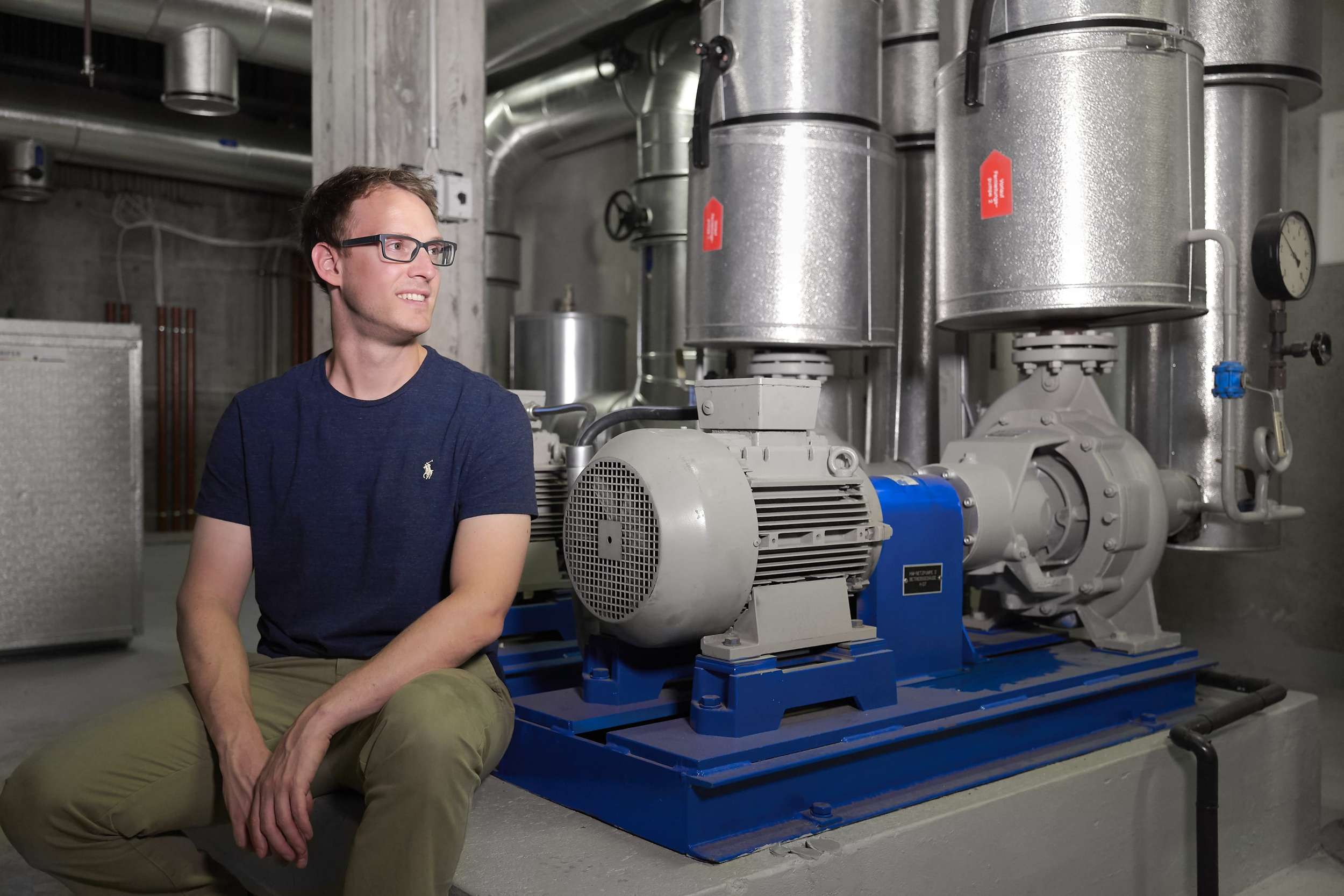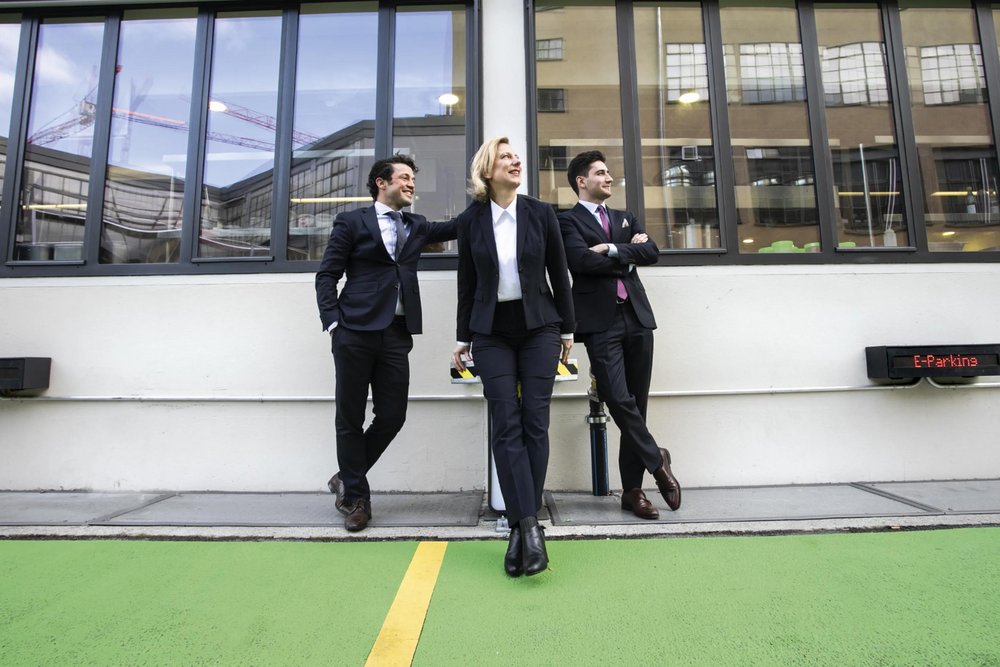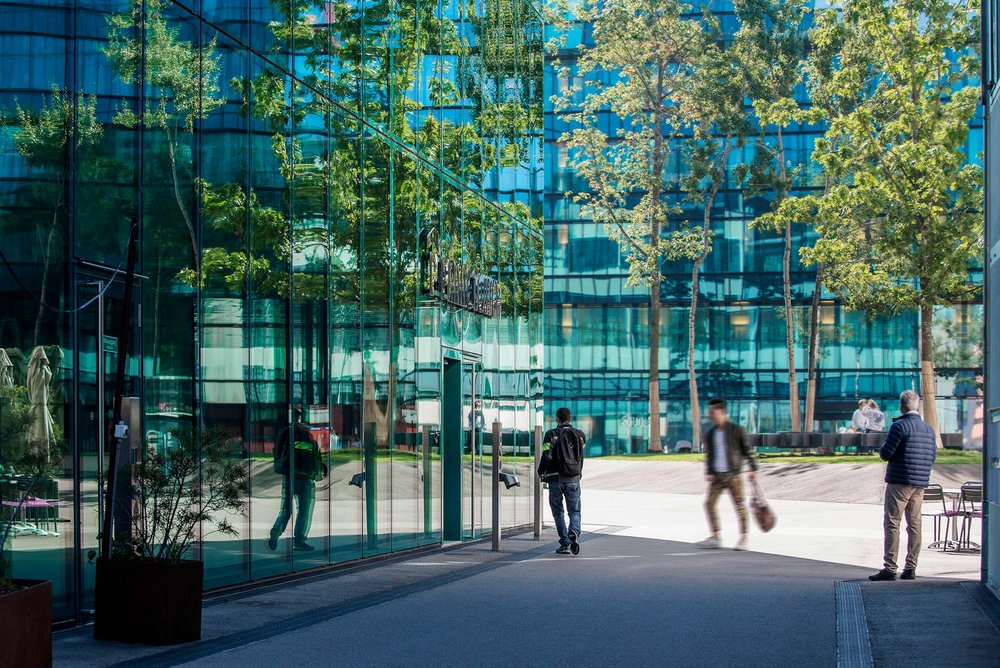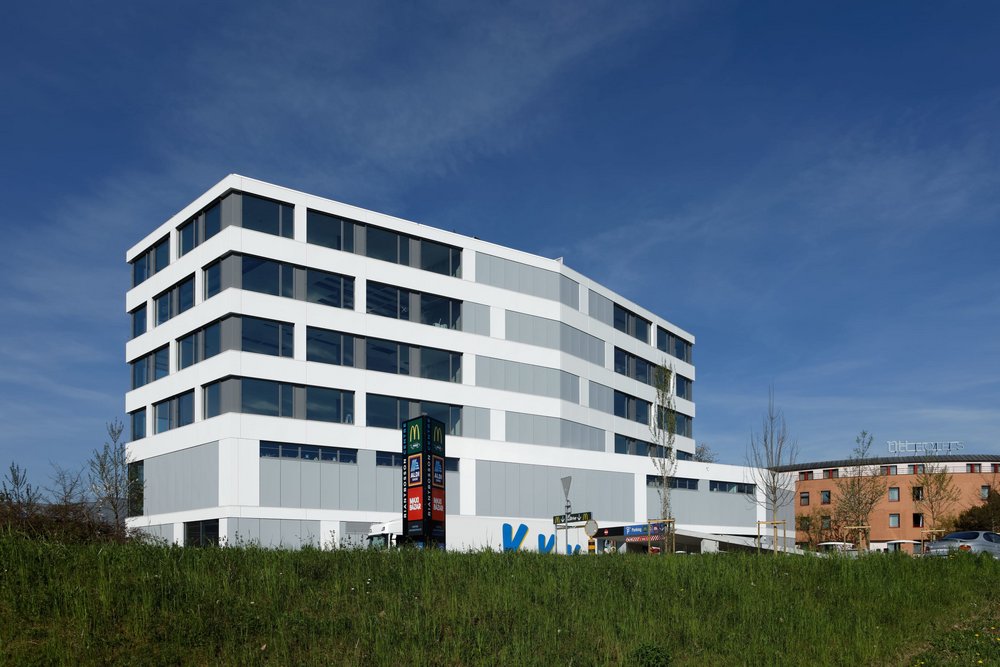Story Detail
Minor changes with major effects
Almost everyone has probably undertaken some kind of energy optimisation on a small scale. Installing a timer on the bathroom heating at home, for example, so that it doesn’t run all day but only when needed. It’s always worth saving a bit of money and it keeps our environmental conscience clear. These kinds of improvements are part of Jan Rüegg’s job – except on a somewhat larger scale. The Sustainability Project Manager analyses the energy data of whole buildings and, together with the energy engineer, evaluates the optimisation potential on site. They then work together to try and lower the energy usage by changing the control parameters.
One particular building where this has proved extremely effective and yielded very high results in relation to the investment is in Otelfingen. Right in front of the station. Which is convenient, as the sustainability expert – of course – travels by train.
Mr Rüegg, why are we meeting in this industrial building that serves as a warehouse and logistics centre for clients such as Jelmoli?
This is one of our showpieces. It demonstrates well what the Swiss Prime Site Immobilien EC/BO project can achieve. We were able to significantly reduce energy usage here despite old facilities and limited options for intervention. Which, of course, has a positive effect on heating costs and reduces the environmental impact.
What does EC/BO stand for?
Energy controlling and business optimisation. The first step is to document the energy usage of a property and then analyse this with the energy engineer to see the potential to reduce consumption. The second step is business optimisation. This means making adjustments to the control parameters. We might change the heating times or reduce the flow temperature, for example. Lighting, ventilation and the use of air conditioning are also analysed and adjusted.
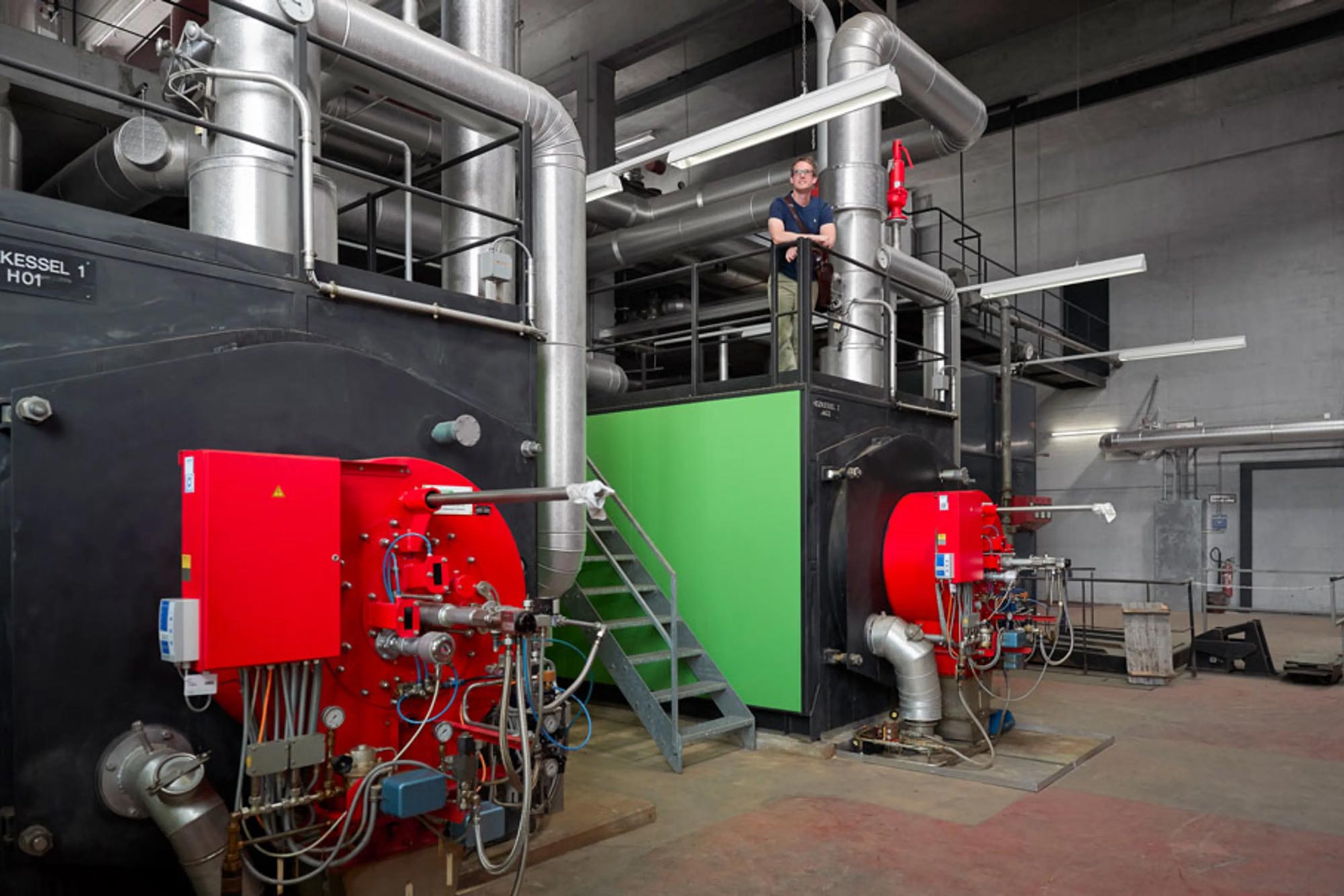
What about sealing the windows or installing a new heating system? Is that part of business optimisation?
No. Business optimisation doesn’t include construction measures – except maybe changing small pumps or vents. The aim of business optimisation is generally to achieve the greatest possible reduction in consumption with the minimum possible effort. The combination of many small adjustments can have a huge positive impact.
It's all about «simple goals» or «low-hanging fruit» that Wincasa aims to achieve – or pick – on Swiss Prime Site Immobilien’s behalf. Reductions in consumption that are easy to implement and have an immediately perceptible impact on usage and cost. The guideline is that all investments should pay off within two years. Business optimisation can usually save 10% or even 25%, although these numbers depend heavily on the building, its age, size and use. Whether a building is used for accommodation, offices or – as here in Otelfingen – for industrial purposes makes a key difference when it comes to adjusting the heating, air conditioning and lighting.
But to know where to start, first you need data. How much energy does the building use? What do the electricity, water and cooling meters show? This is all recorded by a meter box with various interfaces for different meters or a direct connection to the building’s control system. The energy values are saved to a server at 15-minute intervals and can then be accessed by the energy control system. Or the data is collected manually. But the evaluation is always performed by technology and by experts at Wincasa. Like Jan Rüegg.
Mr Rüegg, what do you do with all the numbers the system produces?
Analyse them. At the end of the year, we look at all the measurements that have been taken. How have they developed in comparison with the previous year? Are there outliers? And if so, what are the reasons? If a particular measurement differs from the previous year by more than 20%, the system gives us an automatic warning. Then we obviously take a closer look.
So that means you need a whole year to know where the property stands in terms of consumption, and then another year to be able to compare.
Exactly. You can optimise after a year and, after the second year, you see what difference it made. This helps you build a good basis for adjustments. We also perform repeated spot checks in the meantime. For quality management purposes and to ensure that all the values are being recorded. We also carry out an on-site check for every building, during which an energy engineer spends one or two days inspecting everything in detail, implementing improvements directly and documenting them in their report. After a year, we can see what effect these measures had.
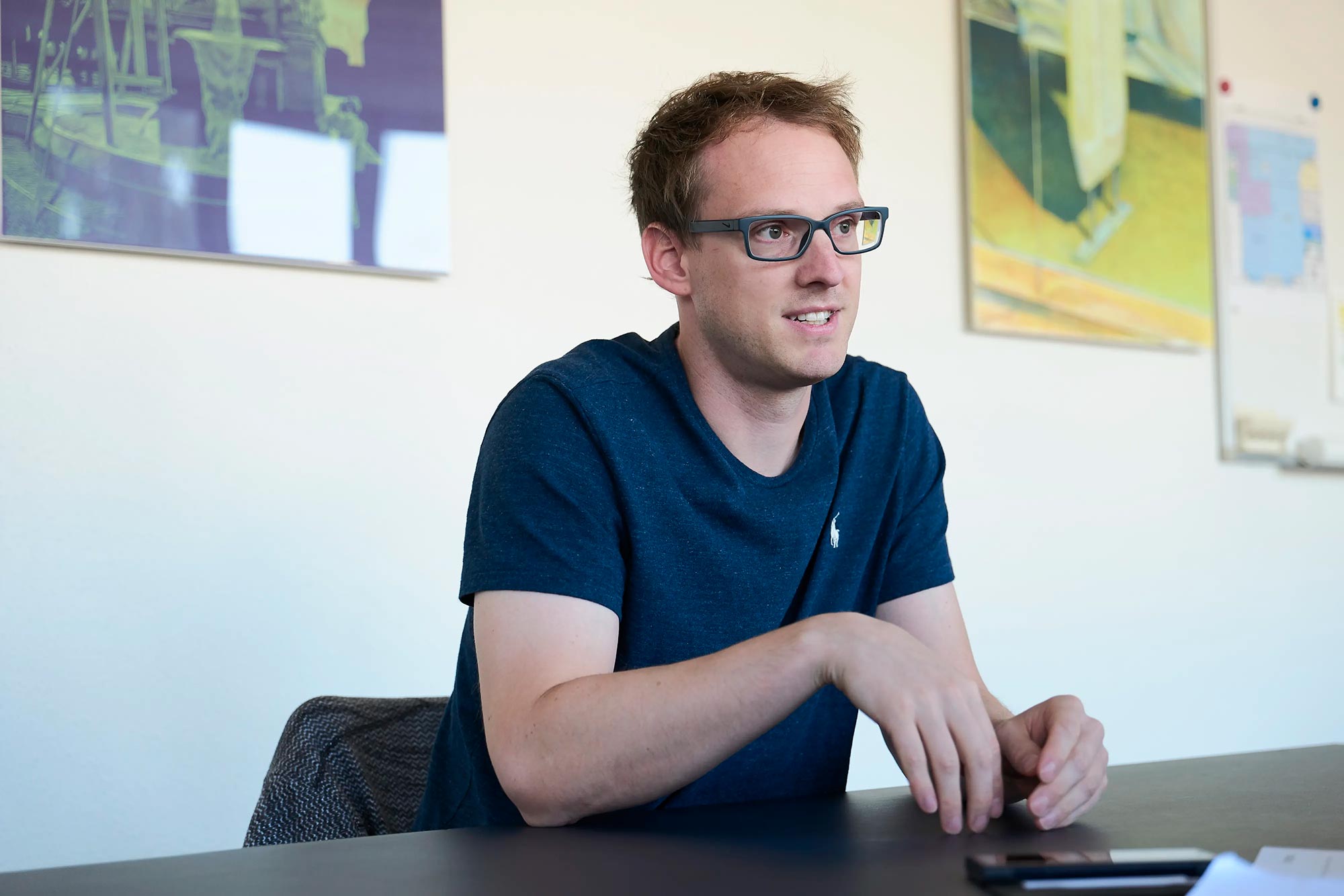
So after a maximum of three years, the building has been optimised and the project has been completed for that location?
Not at all. We continue to monitor. This makes sure that the optimised values stay constant, even when renovations are undertaken or new equipment is installed. Consumption often increases again when this happens and needs to be readjusted.
So it’s a long-term project that shows short-term results. In 2012, Swiss Prime Site Immobilien started recording its energy consumption and quickly optimising its buildings. The goal is for all existing properties to be monitored automatically by 2019 so that the company can operate even more precisely and effectively. Ongoing construction projects will also be implemented with automatic energy data documentation.
Behind all these efforts lies a major aim: to reduce CO2 emissions and contribute to the United Nations’ two-degree target. The project provides the basis for this with the recorded energy data.
Mr Rüegg, Swiss Prime Site Immobilien introduced the EC/BO project six years ago. How has the collaboration worked between the various parties so far?
For the first five years, Wincasa was more of a coordinator between the owner – Swiss Prime Site Immobilien – and the system provider who carried out the measurements on site. Now we handle a large part of the analysis work. This means that we work even more closely with the responsible individuals at Swiss Prime Site Immobilien. Today, our main responsibility is maintaining the level of quality we have achieved thus far and increasing it further.
More than half of the Swiss Prime Site portfolio has already been assessed. Rüegg and his team were able to significantly increase the energy efficiency of many of these buildings. But that doesn’t mean they can sit back and relax. Acting sustainable doesn’t just mean being environmentally friendly, it means being consistent, effective and determined. Even harvesting «low-hanging fruit» requires a lot of perseverance.
